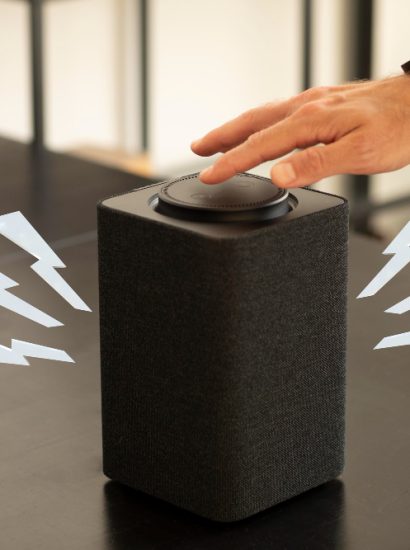The internet is one of the most powerful tools ever created. It connects people, shares knowledge, and provides endless entertainment. But like any powerful tool, it has a darker side. Hidden beneath the surface of everyday websites lies a category of disturbing and harmful material often referred to as Goreweb.
This term describes websites or online communities that share violent, graphic, or distressing content. While curiosity might draw some people toward such material, viewing or sharing it can have serious psychological and legal consequences. This article explores what Goreweb is, why it exists, the risks it poses, and how you can protect yourself and your loved ones from exposure.
What Is Goreweb?
Goreweb refers to the dark corner of the internet that hosts or circulates extreme, violent, or shocking content. It is not a single website or platform but rather a loose network of sites, forums, and social media accounts that spread this type of media.
Unlike mainstream online spaces, these websites often operate outside normal moderation policies. They may display or discuss disturbing material that violates community standards and, in some cases, breaks laws.
Goreweb content is not only emotionally harmful; it often desensitizes viewers and spreads misinformation. Understanding what it is helps people recognize when to avoid such content and protect their digital wellbeing.
Why Does Goreweb Exist?
There are several reasons why Goreweb-type sites continue to exist despite efforts to remove or block them. Some are created out of curiosity, while others exploit shock value to attract traffic. In a few cases, they are maintained by people seeking to push boundaries of what can be shared online.
Another reason is the lack of regulation in certain parts of the internet. When platforms allow anonymity and do not enforce strict content rules, harmful material can circulate freely. In addition, the rise of social sharing has made it easier for disturbing videos or images to spread before moderators can remove them.
Ultimately, Goreweb exists because parts of the internet remain unregulated, and because some users seek out extreme content without realizing the potential harm it causes.
The Psychological Impact of Goreweb Exposure
One of the most concerning effects of Goreweb content is its impact on mental health. Studies have shown that exposure to violent or graphic imagery online can lead to emotional distress, anxiety, and even symptoms of trauma.
Repeated exposure may cause desensitization, meaning a person becomes less sensitive to violence or suffering over time. This can affect empathy, emotional responses, and overall mental balance. For young users, especially teenagers, these effects can be even more damaging, shaping how they perceive real-life violence.
Even brief exposure can lead to nightmares, intrusive thoughts, or avoidance behavior. It’s important to recognize that psychological harm from online content is real and can happen to anyone, regardless of age or experience.
The Legal and Ethical Issues Behind Goreweb
Many Goreweb sites cross ethical and sometimes legal boundaries. Sharing or downloading graphic material that involves real harm can violate laws related to violence, exploitation, or privacy. Even if the content appears to be for “shock value,” it may involve real victims or crimes.
In several countries, authorities monitor online spaces that distribute violent media. Users who knowingly share or promote such material could face legal consequences. Additionally, engaging with this type of content fuels demand, encouraging others to keep producing or uploading it.
From an ethical standpoint, viewing or sharing disturbing real-life violence disrespects the victims involved and normalizes cruelty. Being aware of this helps reinforce responsible digital behavior.
How Goreweb Differs from Regular Dark Web or Deep Web Content
It’s easy to confuse the term Goreweb with the dark web or deep web, but they are not the same. The deep web refers to any online content not indexed by search engines — like academic databases or private company intranets. The dark web is a smaller section of the deep web that requires special software to access and is often used for anonymity.
Goreweb, however, can exist on both regular and hidden websites. Many of these pages are accessible without special tools, making them even riskier because unsuspecting users can stumble upon them through search results or social media links.
The main difference is that Goreweb content focuses on disturbing imagery, while the dark web covers a broader range of hidden online activity.
How to Recognize Goreweb Links and Avoid Them
Goreweb sites rarely advertise themselves openly, but they can appear through links shared in forums, social media posts, or message boards. Common warning signs include:
- Shock-oriented titles or descriptions designed to provoke curiosity.
- Promises of “real footage” or “uncensored videos.”
- Anonymous domains or links shortened to hide their destination.
- Discussions that encourage or glorify violence.
If you come across links or videos like these, avoid clicking them. Even a short exposure can be harmful or lead to unsafe sites filled with malware. Always rely on trusted sources and verify a link’s legitimacy before visiting it.
How to Protect Yourself from Harmful Online Content
The best defense against harmful online content is awareness and proactive safety habits. Here are a few steps to keep yourself safe:
- Use content filters: Most browsers and search engines have safe search settings that block explicit or violent material.
- Avoid suspicious links: Never click links from unknown sources, especially in comments or messages.
- Install security software: Antivirus programs can detect and block malicious or unsafe websites.
- Limit curiosity browsing: Even if you’re tempted, remember that some things cannot be unseen. Protect your mental well-being first.
- Use parental controls: If you have children, activate parental control tools on devices and set up age-appropriate browsing restrictions.
Digital safety starts with understanding that your emotional health is just as important as your physical safety.
Talking to Teenagers and Young Adults About Online Safety
Teens and young adults are among the most vulnerable to Goreweb exposure because of curiosity and peer influence. Parents, teachers, and guardians should keep open communication about what young people might encounter online.
Instead of using fear tactics, focus on education and empathy. Explain the difference between fictional violence in entertainment and real harm shown online. Encourage young people to talk if they accidentally see something disturbing and assure them it’s okay to seek help.
Creating a supportive environment helps them navigate online spaces responsibly while understanding the emotional impact of harmful content.
What to Do If You Encounter Goreweb Content
If you accidentally come across Goreweb material, take immediate steps to protect yourself:
- Exit the page immediately – Close the browser or tab without interacting further.
- Avoid sharing – Do not forward or discuss the content publicly, as this can spread it to others.
- Clear your browser history – This can help prevent algorithmic suggestions of similar material.
- Report the site – Use the platform’s reporting tools or alert relevant authorities if you believe a law has been violated.
- Take care of your mental health – Talk to someone you trust or reach out to a counselor if the content has disturbed you.
It’s normal to feel unsettled after viewing distressing material. Seeking support is a healthy and important response.
The Importance of Promoting a Safer Internet
The fight against Goreweb and harmful online content is not just a job for tech companies or law enforcement. Every user plays a role in shaping a safer internet. Reporting, avoiding, and refusing to engage with violent material helps reduce its spread.
Educational initiatives and awareness campaigns also play a major part in protecting vulnerable users. Schools, families, and communities can promote responsible internet use by teaching empathy, ethics, and emotional resilience.
The more we focus on positive online experiences, the less space there will be for harmful and exploitative content to thrive.
Conclusion
The internet can be an incredible tool for learning and connection, but it also contains dark and dangerous spaces like Goreweb. Understanding what it is, why it exists, and how to protect yourself is key to staying safe online.
Avoiding harmful content, setting digital boundaries, and promoting awareness are the best ways to maintain emotional health in a connected world. Remember that not everything online deserves your attention — and protecting your mind is just as important as protecting your privacy.
By choosing caution, empathy, and awareness, you can help create a healthier and safer internet for everyone.
FAQs
1. What does Goreweb mean?
Goreweb refers to online spaces that share or discuss violent, graphic, or disturbing content, often violating community or legal standards.
2. Is it illegal to view Goreweb content?
It depends on the material. Viewing real, violent content involving victims can be illegal in many countries, and sharing it is always unethical and often punishable.
3. What should I do if I accidentally see disturbing content online?
Leave the page immediately, report it to the platform, and talk to someone you trust if it causes distress. Avoid rewatching or sharing it.
4. Can Goreweb sites contain viruses or malware?
Yes, many such sites are unsafe and can carry malicious software that infects your device or steals personal data.
5. How can parents protect children from Goreweb exposure?
Use parental controls, enable safe search filters, and maintain open communication about online experiences to ensure kids feel safe discussing what they see.
Also read: 10 Reasons to Shop the Shampoo Black Friday Sale 2025: Up to 70% Off Premium Hair Care









